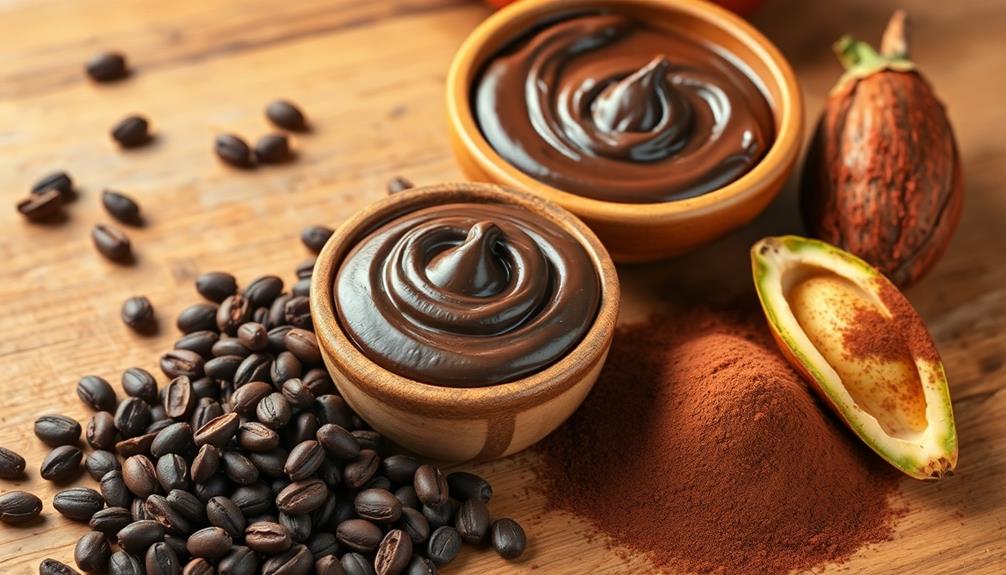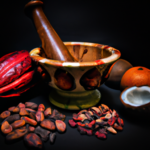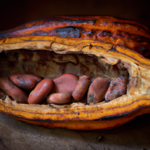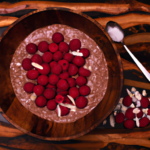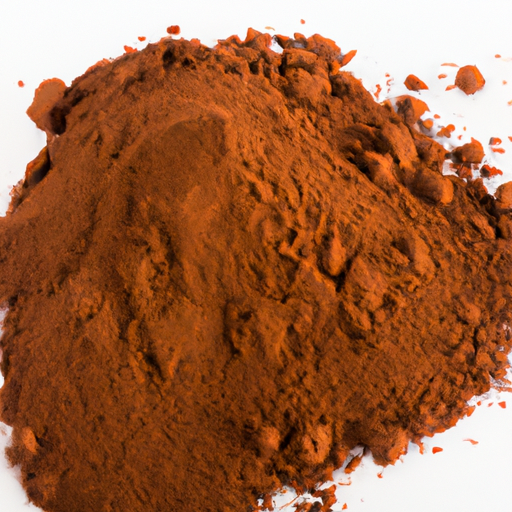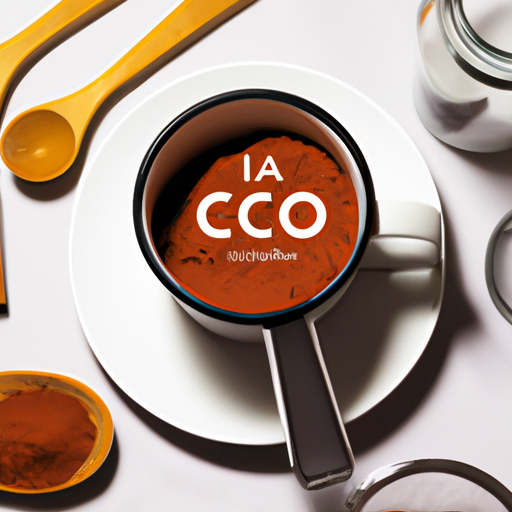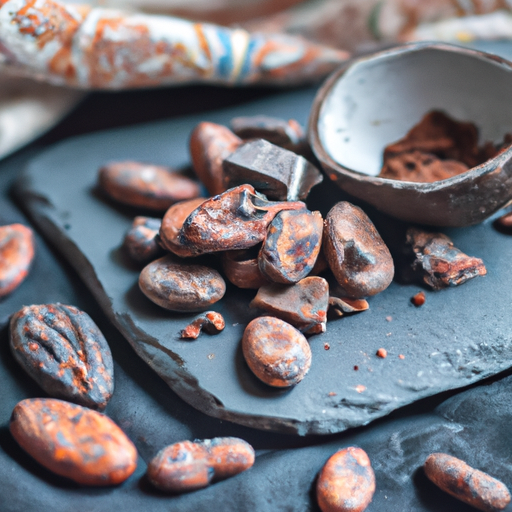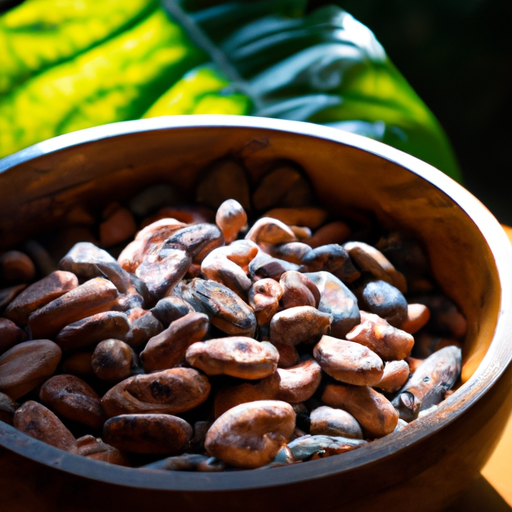Raw cacao comes in three main forms: nibs, paste, and powder. Nibs are chopped cacao beans, packed with antioxidants, perfect for snacking or adding crunch to dishes. Cacao paste maintains a high fat content and is great for intense chocolate flavors in beverages. Cacao powder, made by grinding the beans, is versatile for baking and smoothies but has fewer nutrients due to processing. Each type offers unique flavors and health benefits, so your choice depends on how you plan to use them. If you want to explore more about their nutritional profiles and culinary roles, keep going!
Key Takeaways
- Cacao nibs are chopped raw cacao beans, rich in antioxidants and ideal for snacking or adding crunch to desserts.
- Cacao paste retains full fat content and is a nutritional powerhouse, perfect for creating intense chocolate flavors.
- Cacao powder is versatile for baking and beverages but contains fewer nutrients due to its processing methods.
- Both nibs and paste offer higher levels of healthy fats and antioxidants compared to cacao powder.
- Quality cacao should be sourced ethically and minimally processed to maximize flavor and health benefits.
Cacao Nibs Overview
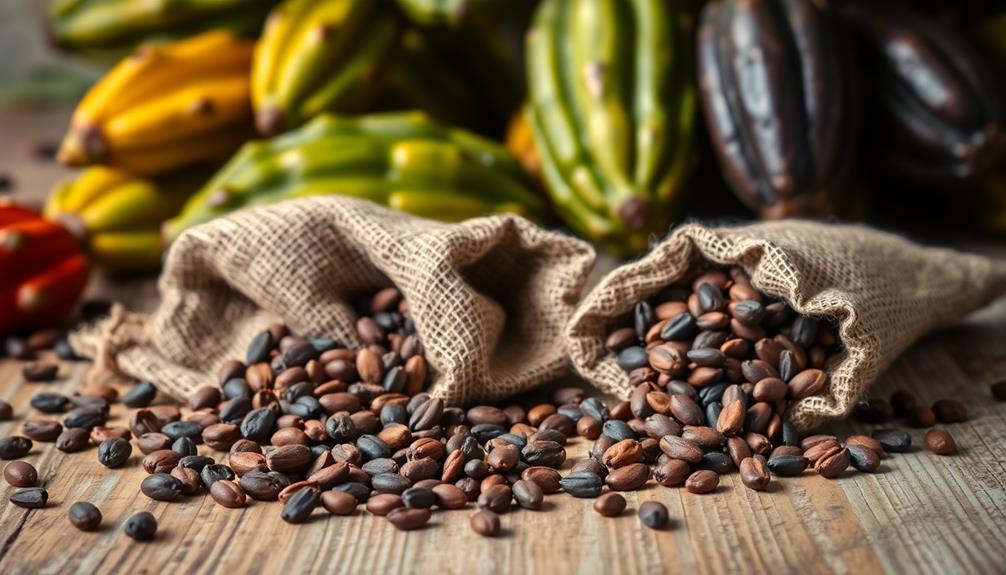
Have you ever tried cacao nibs? These chopped pieces of raw, unprocessed cacao beans pack a punch in both flavor and nutrition. With a nutrient profile that includes high levels of antioxidants, cacao nibs not only add a rich, bitter taste to your favorite dishes but also contribute to your overall health.
You can easily swap them for chocolate chips in recipes, making them a versatile ingredient in your kitchen.
Cacao nibs come in two varieties: non-fermented and fermented. Non-fermented nibs offer a milder flavor, while fermented ones bring a more intense taste to the table. They're perfect for boosting the nutritional value of foods like muffins, granola, and smoothies.
Plus, they add a delightful crunch to desserts and snacks such as ice cream, oatmeal, and pudding.
However, keep in mind that cacao nibs can't replace cacao powder in recipes. Their unique combination of approximately 50% cacao butter and 50% fiber residue means they work best in specific culinary applications.
Embrace cacao nibs in your cooking to enjoy their health benefits and elevate your meals!
Understanding Cacao Paste
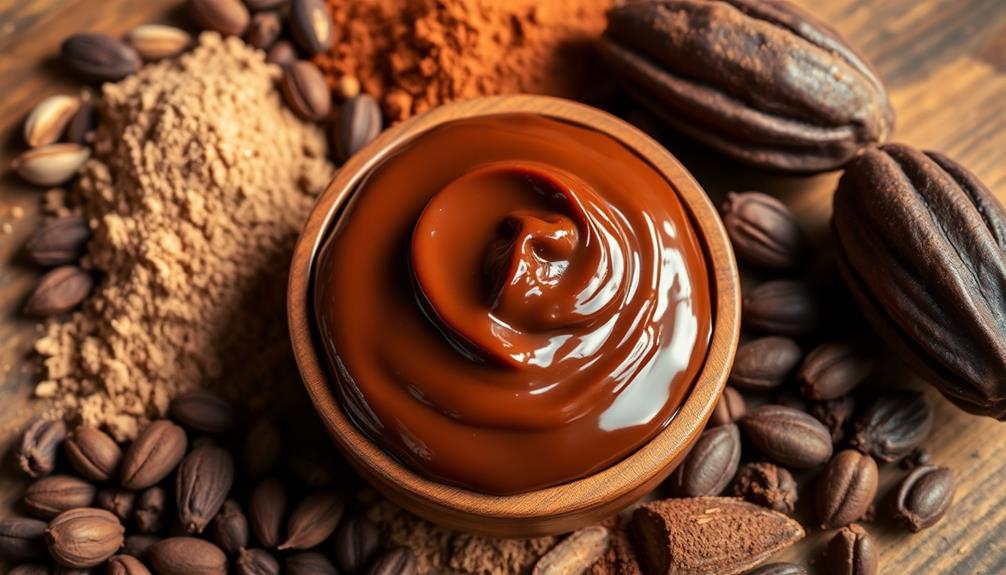
Cacao paste packs a powerful nutritional punch, loaded with antioxidants and beneficial compounds that can boost your health.
When you prepare it, you can use traditional methods like the Molinillo whisk for a truly authentic experience.
Let's explore how to make this rich ingredient and its impressive benefits for your well-being.
Nutritional Benefits Overview
Raw cacao paste stands out as a powerhouse of nutrition, offering a wealth of benefits that can enhance your well-being. Made from fermented and low-temperature dried cacao beans, it preserves its inherent nutrients, delivering a rich profile.
One of the key nutritional benefits of cacao paste is its higher concentration of bioactive compounds, like anandamide and theobromine, which can elevate your mood and boost energy levels more effectively than other cacao forms.
Additionally, cacao paste maintains about 50% natural fat content, promoting a balance of stimulation and nutrient absorption. It's also rich in polyphenols, particularly flavonoids, which provide antioxidant effects that support vascular function and overall health.
By incorporating cacao paste into your diet, you might experience a range of health benefits, including potential roles in cancer prevention and improved insulin sensitivity, thanks to its unique bioactive compounds.
Incorporating cacao paste into your meals or snacks not only satisfies your chocolate cravings but also fuels your body with essential nutrients that contribute to a healthier lifestyle.
Embrace cacao paste and enjoy its impressive array of nutritional benefits!
Preparation Methods Explained
When it comes to preparing cacao paste, the process is straightforward yet rewarding. Cacao paste, also known as cacao liquor, is made by grinding fermented, low-temperature dried cacao beans. This method keeps it raw and nutrient-rich, allowing you to enjoy its health benefits, including healthy fatty acids and antioxidants.
To prepare cacao paste for your recipes or ceremonial cacao, follow these steps:
- Measure the desired amount of cacao paste, typically around 1-2 ounces for a drink.
- Heat fresh water until it's hot but not boiling, about 160-180°F (70-80°C).
- Mix the cacao paste with the hot water in a bowl or blender. Use a traditional Molinillo to whisk it for a frothy texture.
- Enjoy your cacao beverage as is, or add sweeteners, spices, or milk alternatives to enhance the flavor.
This preparation method not only elevates your mood but also allows you to partake in a holistic approach to cacao consumption.
Whether in beverages, desserts, or ceremonial practices, cacao paste is incredibly versatile and delicious.
Exploring Cacao Powder
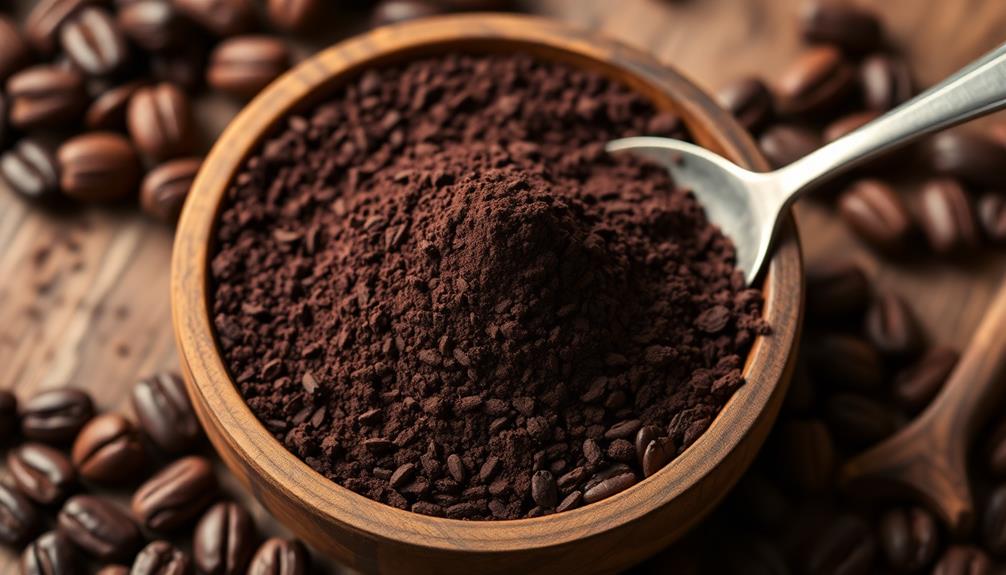
The allure of cacao powder lies in its rich flavor and impressive health benefits, making it a favorite among chocolate lovers and health enthusiasts alike.
Cacao powder is produced by grinding cacao beans and extracting cacao butter, resulting in a product that retains many of cacao's natural benefits. Unlike conventional cocoa powders that undergo high-temperature processing, raw cacao powder is cold-pressed at temperatures not exceeding 104°F. This method preserves living enzymes and nutrients, keeping the powder as beneficial as possible.
Cacao powder is incredibly versatile. You can easily incorporate it into smoothies, baked goods, and beverages, adding a deep chocolate flavor while also providing antioxidants and minerals. It contains flavonoids and other active compounds that contribute to its positive effects on vascular function and may even offer potential cancer prevention properties.
When you choose cacao powder, it's important to check its processing methods and source. Opting for organic and sustainably sourced cacao products guarantees you get maximum nutritional value.
Nutritional Benefits of Cacao
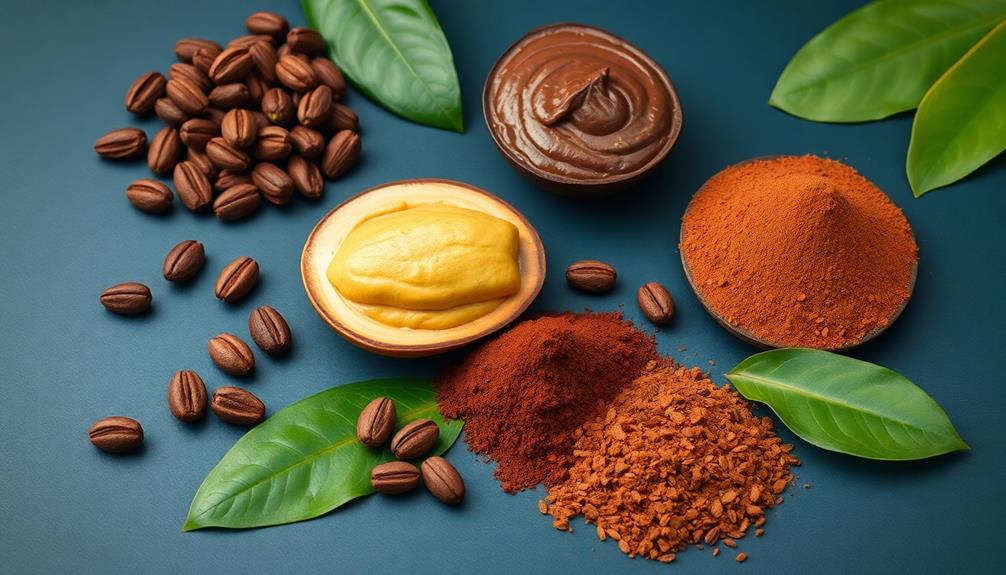
Cacao products offer a wealth of nutritional benefits that can enhance your overall health. When you incorporate various forms of cacao—like cacao powder and ceremonial grade cacao—into your diet, you're tapping into a treasure trove of nutrients.
Additionally, the growing trend toward sustainable sourcing in the coffee and cacao industries guarantees that you can enjoy these benefits while supporting ethical practices. Here are some key benefits:
- Rich in Antioxidants: Cacao is packed with polyphenols, especially flavonoids, which support vascular function and promote insulin sensitivity.
- Nutrient-Dense: It contains essential nutrients like carbohydrates, proteins, healthy fats, and minerals, making it a great food option for overall wellness.
- Mood Enhancer: The anandamide, theobromine, and phenylethylamine found in cacao can boost your mood and energy levels.
- Chronic Disease Risk Reduction: Regular consumption may lower the risk of chronic diseases, including heart disease and cancer, thanks to its bioactive compounds.
Whether you enjoy it in nibs, paste, or powder, cacao delivers impressive nutritional benefits.
Culinary Uses of Cacao
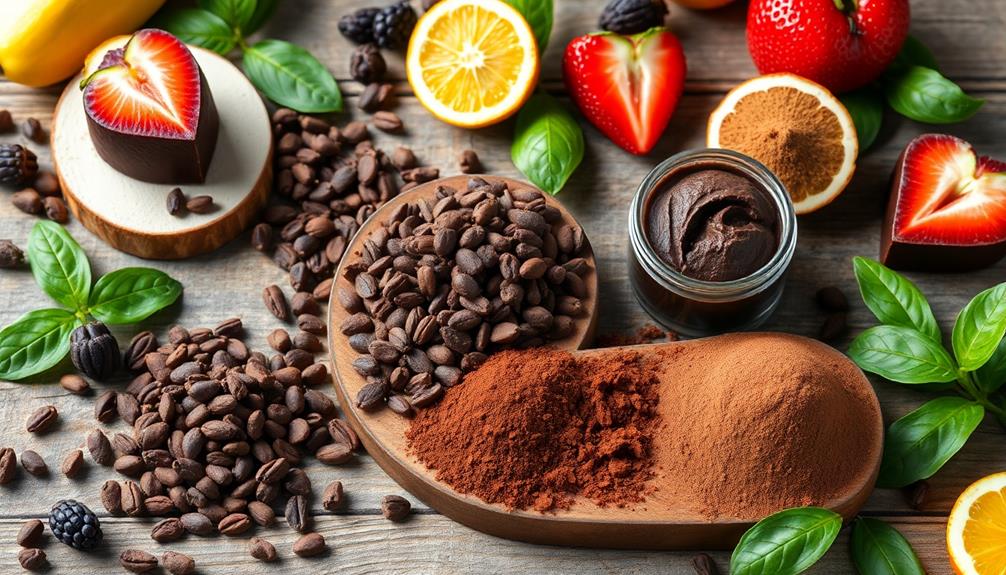
How can you elevate your cooking and baking with cacao? Using cacao in its various forms offers a delicious way to enhance flavors while packing in nutrients. Here are some culinary uses for cacao powder, cacao nibs, and cacao paste:
| Cacao Form | Culinary Use |
|---|---|
| Cacao Powder | Ideal for baking, smoothies, and beverages, adding rich flavor and health benefits. |
| Cacao Nibs | Use as a crunchy alternative to chocolate chips in granola, muffins, or ice cream. |
| Cacao Paste | Mix with water to create nutrient-dense drinks or use in ceremonial settings. |
| Beauty Products | Incorporate cacao powder or nibs into homemade body butter or bronzer for skin health. |
Cacao powder's versatility shines in desserts like chocolate pudding and grain-free cakes, boosting antioxidant content. Cacao nibs provide a slightly bitter crunch, adding depth to various recipes. Cacao paste, often overlooked, can be a luxurious addition to your beverage lineup. By incorporating these cacao forms, you'll not only enhance flavor but also improve the nutritional profile of your meals and treats. Enjoy experimenting with cacao in your culinary adventures!
Choosing Quality Cacao
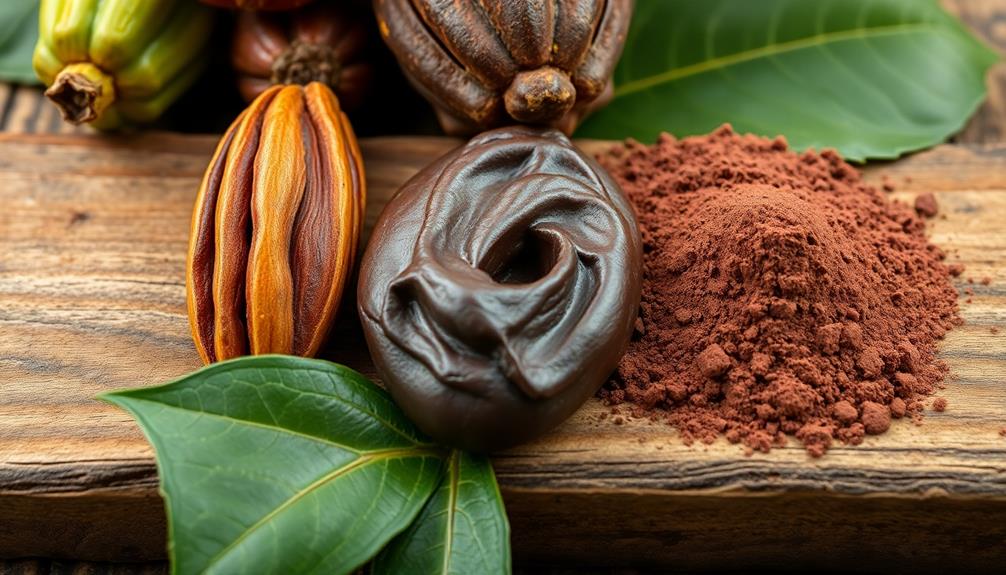
When you're choosing quality cacao, it's essential to assess the processing methods and sourcing practices.
Look for organic and fair-trade labels that indicate ethical production, as well as products that maintain their nutritional integrity through low-temperature processing.
Assessing Processing Methods
Which processing methods truly make a difference in the quality of raw cacao you choose? Understanding these methods can help you select the best cacao products for your needs. Here are four key factors to take into account:
1. Fermentation: Cacao nibs undergo fermentation, enhancing their flavor profile. This step is essential for developing the rich taste you might be looking for.
Additionally, the fermentation process can help reduce mycotoxins, making the cacao safer to consume and increasing its overall health benefits, including antioxidant properties that can improve overall well-being.
2. Temperature: Look for low-temperature processing methods. High heat can strip cacao powder of its antioxidants and health benefits, diminishing its nutritional value.
3. Fat Content: Ceremonial cacao paste is made from lightly toasted beans that are stone-ground, retaining a higher fat content and nutrients compared to processed cacao powder.
This can influence both flavor and health benefits.
4. Minimal Processing: Cacao nibs are simply chopped cacao beans.
The less processing, the more natural flavor and nutrients are preserved, making them a great choice if you prefer authenticity.
Importance of Sourcing
The quality of cacao you choose heavily relies on where and how it's sourced. Prioritizing products that are certified organic and fair-trade not only supports ethical practices but also guarantees you're getting high-quality cacao.
Look for cacao powder that's labeled as raw or minimally processed; this helps retain the maximum nutrients and antioxidants, which are essential for health benefits.
The origin of the cacao can also greatly affect its flavor and quality. Criollo beans from Mesoamerica are often sought after for their rich taste and superior quality.
When you're selecting cacao, consider brands that emphasize low-temperature processing, as this preserves the living enzymes and health benefits, making it a better choice for health-conscious consumers.
Don't hesitate to taste-test different brands to find the flavor profile you enjoy most while confirming that the product meets both quality and ethical standards.
By taking the time to choose wisely, you'll not only enjoy cacao that's rich in flavor and nutrients but also feel good about the sourcing practices behind it.
Nutritional Comparison Overview
Choosing quality cacao involves understanding the nutritional differences among its various forms. Each type—cacao nibs, cacao paste, and cacao powder—offers unique benefits. Here's a quick comparison to help you make informed choices:
- Cacao Nibs: Containing about 50% fat, these crunchy bits are rich in fiber and antioxidants. Their bitter flavor makes them perfect for snacking or as toppings.
- Cacao Paste: Also known as cacao liquor, this form retains the full fat content of the bean (around 50%) and is packed with antioxidants. It's ideal for creating intense chocolate flavors in elixirs and desserts.
- Cacao Powder: This versatile option usually contains 20-30% cacao butter. While it's great for baking and beverages, it undergoes processing that removes some healthy fats and nutrients, making it less nutrient-dense than the whole forms.
- Nutritional Benefits: Cacao nibs and paste offer higher levels of healthy fats and antioxidants, while cacao powder may lack some of these benefits due to processing.
When selecting cacao, prioritize organic, ethically sourced, and minimally processed options for maximum health benefits.
Ceremonial Cacao Practices
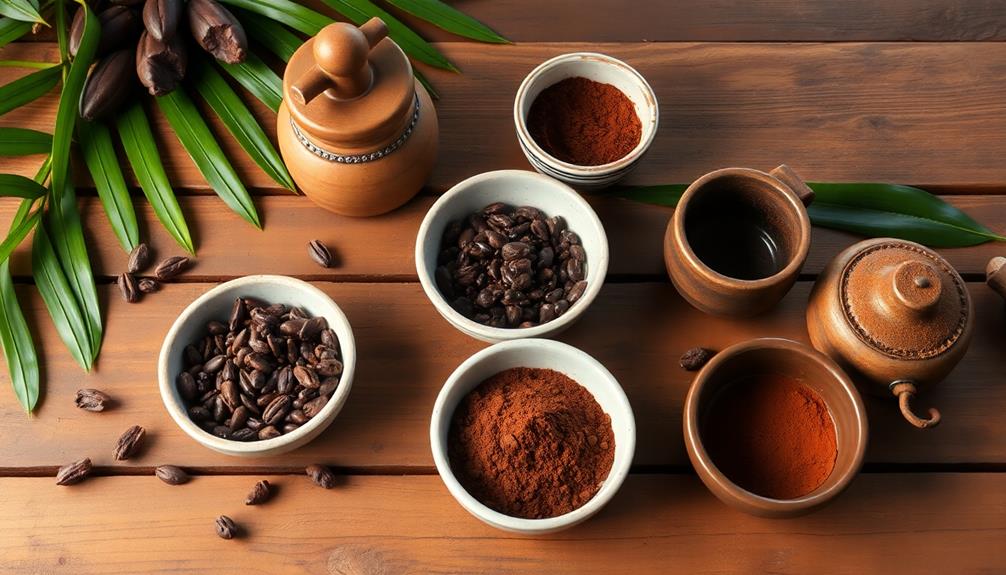
Ceremonial cacao practices offer a rich, immersive experience that goes beyond simply enjoying a beverage. These rituals utilize high-quality, fermented cacao paste, which retains its natural fats and nutrients, enhancing both flavor and health benefits. During a cacao ceremony, participants often gather in communal settings, creating a supportive environment for mindfulness and introspection.
The preparation of ceremonial cacao involves stone-grinding the beans, preserving their rich flavors. This heart-opening beverage invites you to savor each sip while sharing thoughts or intentions with others, fostering deeper connections.
Here's a quick comparison of key elements in cacao practices:
| Element | Ceremonial Cacao | Cacao Powder |
|---|---|---|
| Preparation | Stone-ground, fermented | Processed, often defatted |
| Nutritional Value | Rich in antioxidants and fats | Lower in nutrients |
| Purpose | Spiritual and emotional connection | Culinary use |
Incorporating ceremonial cacao into your daily practices can help with emotional release and enhance your well-being, allowing you to explore your personal relationship with cacao through mindful consumption.
Frequently Asked Questions
What Is the Difference Between Cacao Nibs and Cacao Paste?
Cacao nibs are crunchy, bitter pieces of crushed beans, while cacao paste is a smooth, creamy mixture of ground beans. You'll find nibs great as snacks, whereas paste works well in desserts and beverages.
What Are the Different Types of Cacao Nibs?
When you explore cacao nibs, you'll discover fermented nibs with rich, intense flavors and non-fermented nibs offering milder tastes. Both types provide delightful crunch and nutrition, enhancing your favorite dishes and snacks effortlessly.
Are Cacao Nibs or Powder Better?
When deciding between cacao nibs and powder, it depends on your needs. Nibs add crunch and intense flavor, while powder blends smoothly into recipes. Choose based on texture and taste preferences for your culinary creations.
What Is the Difference Between Cacao Paste and Powder?
Cacao paste's thick, rich consistency retains all its natural fats and nutrients, making it perfect for ceremonies or elixirs. In contrast, cacao powder's drier texture is ideal for baking and everyday recipes.
Conclusion
In the world of chocolate, cacao is the hidden treasure waiting to be discovered. Whether you're crunching on nibs, melting paste, or stirring powder, each type brings its own unique flavor and benefits to your table. By understanding these differences, you can elevate your culinary creations and nourish your body at the same time. So, immerse yourself in the rich spectrum of cacao and let its magic transform your dishes into delightful experiences.

